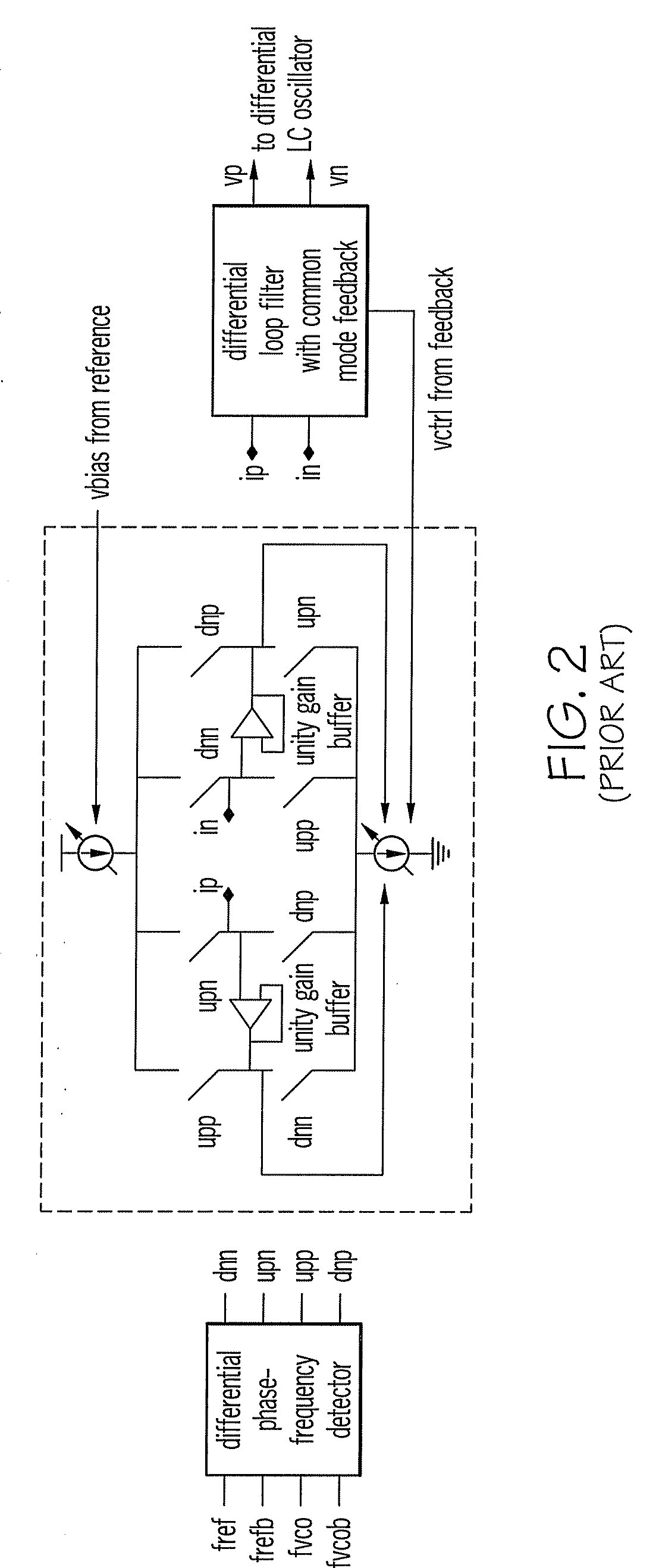Method to Reduce Static Phase Errors and Reference Spurs in Charge Pumps
- Summary
- Abstract
- Description
- Claims
- Application Information
AI Technical Summary
Benefits of technology
Problems solved by technology
Method used
Image
Examples
Embodiment Construction
[0033]Disclosed is a design for a phase-locked-loop (PLL) circuit that addresses charge feed-through and charge pump mismatch effects. The design may be applied to delay-locked-loop (DLL) circuits as well. For convenience, an exemplary embodiment is provided in FIG. 3.
[0034]In FIG. 3, aspects of a circuit 10 for cancellation of pulses of substantially equivalent value in order to reduce static phase errors and reference spurs is depicted. The circuit 10 applies logic 11 between a phase-frequency detectors (PFD) 5 and a charge pump 15. The logic 11 conditions control signals of the charge pump 15 in such a way that none of the switches for the charge pump 15 are closed simultaneously. Additionally, a core of the charge pump 15 is extended with an orthogonal adjustment of a gain for the charge pump 15 and a mismatch for the charge pump 15. The tail current source widths in the charge pump units 15 are further subdivided into binary weighted units (indicated by an arrow in the tail cur...
PUM
 Login to View More
Login to View More Abstract
Description
Claims
Application Information
 Login to View More
Login to View More - R&D
- Intellectual Property
- Life Sciences
- Materials
- Tech Scout
- Unparalleled Data Quality
- Higher Quality Content
- 60% Fewer Hallucinations
Browse by: Latest US Patents, China's latest patents, Technical Efficacy Thesaurus, Application Domain, Technology Topic, Popular Technical Reports.
© 2025 PatSnap. All rights reserved.Legal|Privacy policy|Modern Slavery Act Transparency Statement|Sitemap|About US| Contact US: help@patsnap.com



